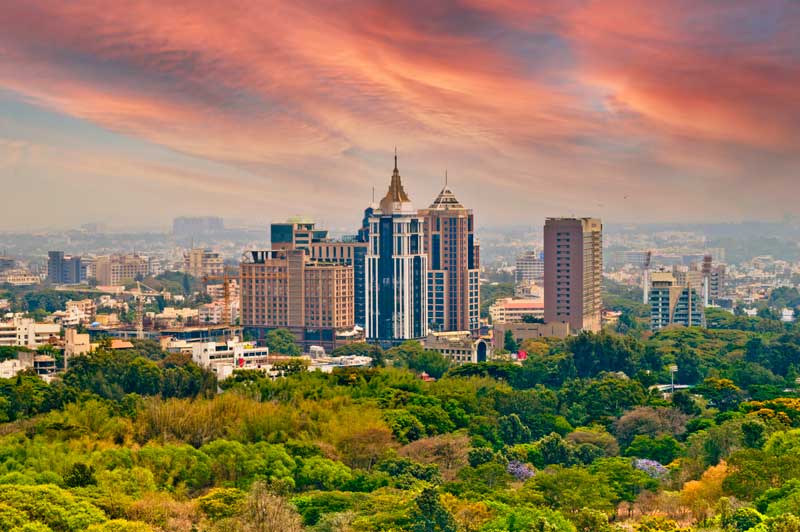AVCJ Forum – Private equity poised to strike
Ahead of our 36th AVCJ Private Equity and Venture Forum, held in Hong Kong from 13‑16 November, we analyze Asia-Pacific’s private-equity (PE) landscape, and predict trends for the future. We showcase a pipeline of Mergermarket’s Likely-to-Exit (LTE) PE- and venture capital (VC)-backed companies using our unique combination of proprietary investigative journalism and machine-led intelligence. Mergermarket’s LTE predictive analytics assign a score to those companies with PE sponsors to help track and predict when an exit could occur through M&A, an IPO, a direct listing or a de‑SPAC transaction.
Valuation corrections reveal opportunities in technology and healthcare
PE investment in Asia-Pacific hit the skids in 2023, with the latest AVCJ data showing a fall to approximately USD 93bn as of 3Q23, down from USD 166bn last year. The steep decline follows years of plenty – even the onset of the coronavirus (COVID‑19) pandemic had a relatively muted impact on investment in the region, with an average of USD 187bn worth of deals announced every year between 2017 and 2022. However, with three-quarters of 2023 now in the books, it appears highly unlikely this year’s volume will play catch up to the average over the past five years.
PE suitors have pumped the brakes, spooked by volatile geopolitical tensions, dark clouds engulfing China’s real-estate (RE) sector, upcoming elections in India, and investor uncertainty in Australia. Amid the malaise, Japan has shone, as deal volume balloons 31% from 2022 and investment climbs to almost USD 30bn. The country’s top two deals in 2023 are also the largest in Asia-Pacific to date – Japan Industrial Partners’ USD 15bn buyout of diversified electronics major Toshiba [TYO:6502], and Japan Industrial Corporation’s USD 6.8bn swoop for semiconductor manufacturer JSR [TYO:4185].
Over the next 6‑12 months, dry powder is expected to flow into Japan, South Korea and Australia, as investors take refuge in APAC’s more developed markets, lured by stable returns over high risk/reward prospects.
“Domestic consumption-driven businesses that cater to aspirational demand playing on the themes of health and wellness are likely to attract capital,” says Manish Kejriwal, founder and managing partner at Kedaara Capital in Mumbai. True winners, he opines, are likely to emerge.
The region’s most attractive segments for both PE and VC investors have been defensive plays: healthcare and technology. But even growth-stage tech deals are feeling the pinch over the past 18 months, as investors shy away from sinking money into assets with no clear IPO window. This could present an investment opportunity for distressed investors who take advantage of new age tech companies that raised money at inflated valuations and could experience downturns.
Green investment in the region has also withered, tumbling 26% to USD 7.4bn from its total for the whole of 2022. With three months of the year remaining, upside hopes lie in Greater China and South Asia, where the number of green deals is already higher than it was last year.
PE fundraising plunges to 10-year low
As the impact of COVID‑19 started to dissipate, PE fundraising in 2021 soared to record-breaking levels. However, this year has been a very different story, with fundraising collapsing.
“The rapid increase in interest rates has caused investors to re-examine their asset allocations and be selective in terms of which general partners (GPs) they back,” said Kejriwal.
Capital-hungry businesses have been caught in the storm. As at 3Q23, AVCJ data reveals that 160 funds – including RMB-denominated, buyout, mezzanine and secondary, but excluding global funds with an Asia focus – netted USD 36bn, a far cry from 2022, when 401 funds raised USD 76bn, and even further removed from the record 486 funds landing USD 90bn in 2021.
Limited partners (LPs) are increasingly reassessing their attention to smaller enterprises, particularly those that have yet to produce steady returns, and funds with exposure to select markets such as China, where activity has stalled and distributions ebbed. Fundraising has also been hit by a decline in exit opportunities and quality assets, which slowed the investment cycle.
It has been almost a year since Beijing lifted its strict zero-tolerance COVID‑19 measures, but renminbi funds have yet to recover. Since 2019, RMB-denominated funds have fallen every year, battered by pandemic-induced disruption and more recently China’s unfolding real-estate crisis, all of which has rocked investor confidence. Local-currency denominated funds in the country are now at their second-lowest level in a decade, totalling only 66 funds worth USD 13bn in 3Q23 compared with 133 funds worth USD 23bn last year. With China’s borders fully open, RMB funds may look to pick up the pace again.
Asia-Pacific is expected to see a rise in special situations and secondary fundraising over the coming months, as investors chase upside in private markets. For example, Ares Management recently launched a USD 2.4bn special situations Asian fund, with a sidecar vehicle for Australia and India, citing strong economic trends in both countries. In June 2022, Bain Capital kicked off a regional USD 2bn special situations fund, while in January, Asia-focused secondary investor TR Capital Group reached first close of USD 350m on its fifth fund, with an overall target of USD 600m, per a Mergermarket report.
PE and VC exits lag
This year has been a bumpy ride for not only fundraising and deal-making, PE and VC exits have suffered, too, sliding to a 10‑year low of USD 30bn from 248 deals compared with 512 exits valued at USD 78bn in 2022. The top three countries for exits in 2023 YTD have been India, Australia and South Korea, but activity remains subdued.
The sharp decline can be attributed to three factors. First, exit options in the form of debut listings have all but dried up given APAC’s volatile equity capital markets. Second, both buyers and sellers have sought to navigate a market correction after the frothy valuations of 2021 and 2022, souped up by free-flowing liquidity, returned to more realistic levels. Lastly, corporate executives are opting for a ‘watch and wait’ approach from the sidelines rather than actively pursuing strategy-driven M&A.
Sponsor-to-sponsor exits have ticked up, as strategic investors, particularly from outside the region, curb acquisitions. Only two of this year’s top 10 PE and VC exits as of 3Q23 involve strategic suitors, with the largest being Walmart [NYSE:WMT] shelling out USD 1.4bn for a 4.3% stake in Indian e-commerce company Flipkart Online Services, thus providing an exit for Tiger Global Management, while New Zealand-based infrastructure investment company Infratil splashed USD 1bn for a stake of almost 50% in telecom firm One New Zealand Group, providing a way out for Brookfield Asset Management.
GPs are starting to think more broadly about exits, and this is evidenced by a rise in continuation funds, which can roll over single or multiple assets for a few years until valuations become more appealing. Single-asset continuation funds in Asia-Pacific include Australia’s Pacific Equity Partners (PEP) and Quadrant Private Equity, China’s Hosen Capital, and South Korea’s Hahn & Company. Secondaries, once seen as a last resort, are also generating more interest as sponsors avoid traditional exit routes.
While 2023 may be a year best forgotten, prospects look brighter for the next 6-12 months. Fundraising is expected to improve, greater interest-rate stability should foster increased deal-making activity, and a recovery in equity capital markets will mean investors can get back to business.
Recent Dealspeak APAC columns you may have missed...
Jewel in the crown: India’s financial technology industry is the toast of APAC
If we build it, they will come: ‘Made in China’ drawing foreign investors
Summer lovin’: APAC dealmaking volume soars in August
Did you see last week’s Dealspeak APAC:
Centres of attention: India’s fast-growing AI industry is ramping up interest in data centers











